Mapped: The world's most - and least - crowded countries
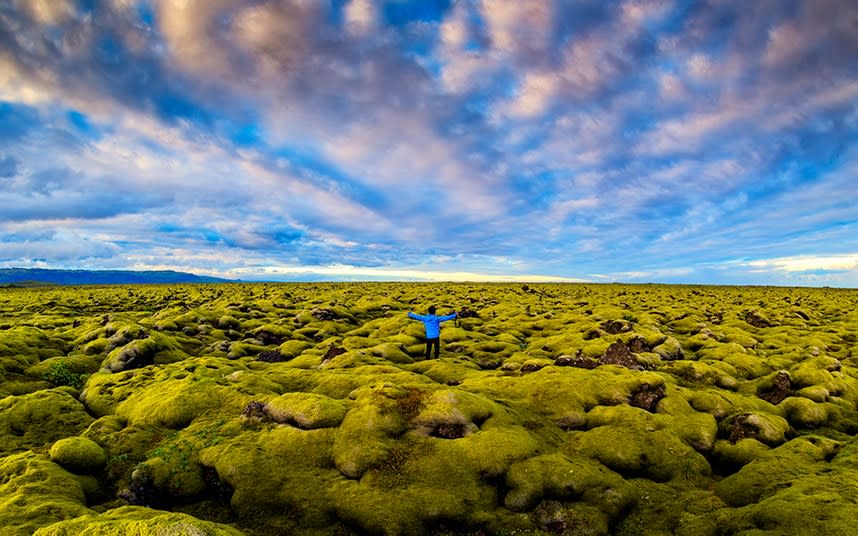
Do you long for peace and solitude on your travels? Then you'll do far worse than to take your next break in one of these countries. To mark World Population Day, we've researched the 10 least densely populated, measured in number of people per square kilometre, according to the latest available figures from the UN Population Division.
Such trips could mean roaming the plains of Mongolia, striking through rainforest in Suriname, or cruising the vast fjords of Greenland. This is how to do remote, wild and adventurous – with the figures to back up your post-holiday bragging. The map above, meanwhile, shows every country in the world according to population density - so you know which ones to steer clear of if you like peace and quiet.
1. Greenland
Population density: 0.0 people per sq km
Rounded to the nearest decimal place, the population density of Greenland is officially 0.0. The world’s largest island is home to around 56,000 people, meaning that a population around the size of west Devon (an area of 448.3 square miles) inhabits an area of 836,330 sq miles. This vast land, which has been inhabited for around 4,500 years, has mountainous shorelines, long summer days and jewel-blue fjords. Try visiting the Arctic ghost town of Skoldungen, abandoned for more accessible settlements in 1961.
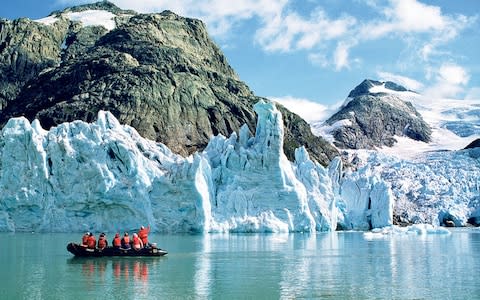
2. Falkland Islands
Population density: 0.3 people per sq km
This archipelago on the Patagonian Shelf is home to just 3,000 people. Argentina famously lays claim to this British Overseas Territory, but a referendum in 2013 saw the population vote overwhelmingly to remain British – just three of the 1,517 votes cast favoured Argentinian rule. Chris Moss, a Telegraph Travel contributor, says it is a “special, strange place and those who do make the effort often become repeat visitors. Stanley [the capital] provides a nice homely stopover on voyages that revolve around wild seas, icebergs and penguins. Pubs, a post office, a cathedral, an excellent museum and good gastronomy mean that a stay is not just quirky, but actually very pleasant too.”
? 10 of the best technology-free holidays
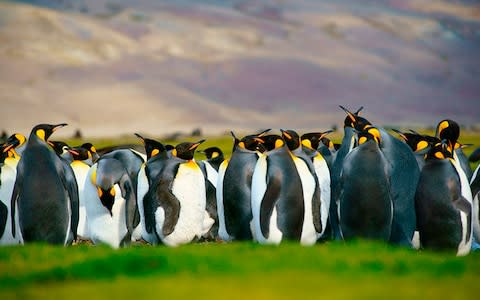
3. Mongolia
Population density: 1.9 people per sq km
A landlocked country of wide steppe and semi-desert, Mongolia has a population that clusters in the capital, Ulaanbaatar, leaving swathes of land pinpricked only by small nomadic communities threatened by harsh weather, storms and economic difficulties. Visitors are lured by the chance to ride horses across wild, open landscapes (the country had an area of 1.5 million sq km) and the chance to stay in remote gers that offer an insight into traditional ways of living.
? Kate Humble on living with Nomads in Mongolia

4. Western Sahara
Population density: 2.3 people per sq km
This land of 266,000 sq km (103,000 sq.mi.) is a disputed territory, between Morocco and the Polisario Front, an Algeria-backed rebel movement. The land is mostly flat desert, rich in phosphates, with extra resources in the form of fisheries and possibly offshore oil. The Foreign Office advises against all travel to within 30km north/west and to the south/east of the Berm, a 2,700km long wall dividing the desert, and says that in remote areas there is a risk of landmines. There are no advisories against visiting the area around Laayoune, the largest city, where most of the populace lives.
5. Namibia
Population density: 2.9 people per sq km
The shifting dunes of this southern African country occupy much of its landmass, although it also has game-rich grasslands and a semi-arid Central Plateau. Top attractions include the Kalahari Desert, the Skeleton Coast, and Lüderitz, a bright harbour town with early 20th century German Art Nouveau buildings.
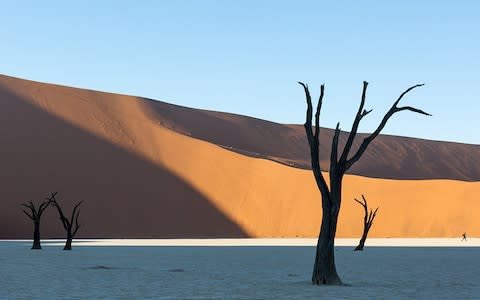
6. French Guiana
Population density: 2.9 people per sq km
France in South America can be found in French Guiana, an overseas territory of our neighbour across the Channel. The product is a strange mixture of western motorways, colonial architecture and French law alongside dense rainforest and Caribbean cuisine. Visiting in 2011 for Telegraph Travel, Chris Moss noted how "Liberte, égalité, Fraternité" was stencilled on the side of a small government building near the border post at Le Juliette. Not far from the spot is the former transportation camp of St Laurent du Marconi, where 70,000 convicted criminals and political prisoners were sent between 1852 and 1953.
7. Australia
Population density: 3.1 people per sq km
Mark Chipperfield, our Australia expert, says it as one of the world’s greatest travel destinations for its “extraordinary scenery and exotic wildlife” and diverse landscapes: “Red dirt deserts, tropical beaches, snow-capped mountains and temperate rainforest can all be found here.” It has a vast area – 7,692,024 km2 – and a relatively low a population of 23 million – around a third of that of the UK. Citizens cluster in the coastal cities such as Sydney, Canberra and Perth, leaving much of the Red Centre empty.
See our extensive guides to Australia for more information on how to visit.
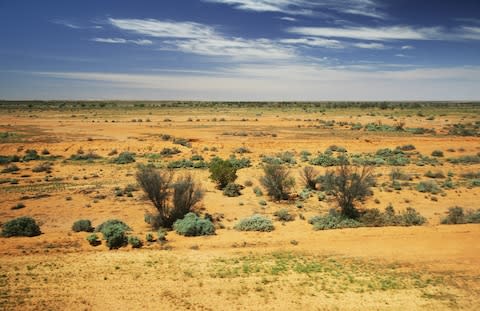
? Mapped: Terror threat around the world
8. Iceland
Population density: 3.3 people per sq km
The Northern Lights may shine bright over this lunar landscape of snow, rock, ice, and volcano, and those who venture to see them won’t have many companions. Iceland has a population of around 330,000, mostly centred in the cool capital Reykjavík. Elsewhere on the island there are glacier walks, climbs, descents inside volcanoes (really) and some of the world’s best diving: the gaps between tectonic plates are filled with crystal-clear waters.
50 remote adventures to try in your lifetime
9. Suriname
Population density: 3.3 people per sq km
This sovereign state, with Dutch as the official language, is squeezed inbetween French Guiana, Guyana and Brazil. Although the country is mostly rainforest – there are no natural harbours and few railways or roads – its capital, Paramaribo, is home to the Saint Peter and Paul Cathedral, which would not look out of place in a European city square. John Gimlette, visiting in 2011, said: “If I were to design the perfect city, it would be like Paramaribo. It would all be white, and have a river running through it. There'd be plantations and fruit trees, and little canals would ripple through the centre. There'd be no business district or overbearing banks, and nothing would be taller than a church. At the heart of it all would be a little purple fortress, like a hat full of mansions.”
10. Botswana
Population density: 3.5 people per sq km
Botswana is the world’s largest producer of diamonds, but as it tries to lessen its dependency on exports of the jewels, safari tourism is developing. Indeed, it has been described as offering one of the world’s best game drive experiences: the Big Five are all on the prowl. Other highlights of the country, 40 per cent of which is protected and conserved for wildlife, include the wetlands of the Okavango Delta and the Kalahari Desert.
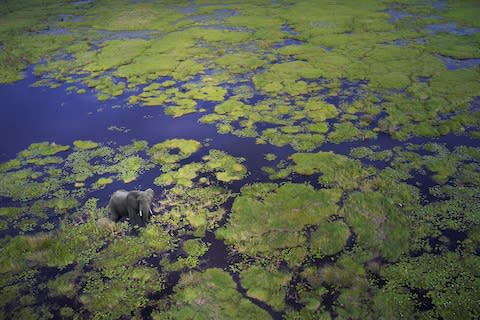
14 of the world's most fascinating remote places
But what about those who like to feel the closeness of their fellow humans?
Introducing the world's 10 most densely populated countries
1. Monaco
Population density: 25,718.1 people per sq km
The principality covers just 0.78 square miles and boasts a population of some 37,000, which explains its superlative density. Barely room to swing an expensive pedigree feline.

2. Macao
Population density: 22,477.6 people per sq km
An autonomous territory of the People's Republic of China, and a big gambling destination, Macao is renowned for its bright lights and hustle and bustle. It's only 11.8 square miles.
3. Singapore
Population density: 8,226.7 people per sq km
This shimmering city state is another tiny enclave of rubbing shoulders. Despite increasing its size by some 23 per cent - thanks to land reclamation - it remains immensely densely populated, and only 277.6 square miles. It also enjoys (suffers from) basically an eternal summer, with temperatures rarely dipping below 26C.
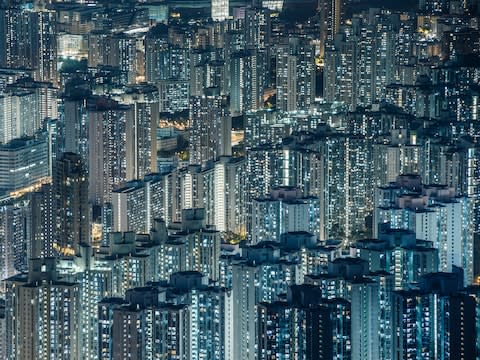
4. Hong Kong
Population density: 6,654.7 people per sq km
Across the Pearl River Delta from Macao, Hong Kong is somewhat roomier but still pretty jam-packed. The autonomous territory is also 60 per cent water.
5. Gibraltar
Population density: 4,892.3 people per sq km
The Rock squeezes about 32,000 people into a space a little bit smaller than Bangor. And then there are all the monkeys too.

6. Bahrain
Population density: 1,959.2 people per sq km
The third smallest country in Asia, behind Singapore and the Maldives, Bahrain is home to just 295 square miles of land and a whole load of Grand Prix fans, after the nation became the first in the Middle East to host the race of the fast cars in 2004.
7. The Vatican City
Population density: 1,818.1 people per sq km
The country within a city has a population of about 1,000, including the Pope, and an area of approximately 110 acres. The Vatican also employs around 2,000 people and welcomes some 25,000 tourists a day. Crowded.

8. Sint Maarten
Population density: 1,379.8 people per sq km
This figure refers to the Dutch half of the island in the Caribbean, rather than the French (Saint-Martin). It's a busy old place with 33,609 people sharing just 13 square miles. Though they are lovely square miles.
9. Malta
Population density: 1,364.6 people per sq km
The Maltese capital, Valletta, at 0.8 square kilometres, is Europe's smallest, while the rest of the island - and its sibling Gozo, is hardly massive. Sat low in the Mediterranean, Malta has Europe's second highest population density.

10. Bermuda
Population density: 1,237.3 people per sq km
The British Overseas Territory in the North Atlantic is home to pink sand beaches, turquoise waters and a population of some 65,000 people, all spread across 181 islands, but just 20.6 square miles.
Win a luxury holiday worth up to £80,000
Population densities are persons per square kilometre, as of 1 July 2012 (the latest figures available), sourced from the UN Population Division. The densities in the map were predominantly sourced from the UN Population Division, while a few figures were also taken from other sources.